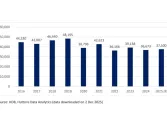
Real-time cross-border payments surge
However, G20 targets remain unmet.
Real-time cross-border payments are seeing rapid growth as consumers increasingly use them for sending money and purchasing goods. Despite this rise, global progress still falls short of G20 targets for improving speed and efficiency, according to GlobalData.
In its 2024 Financial Services Consumer Survey, about 63% of consumers use real-time payments to send money to family and friends, whilst 51% use them to buy goods and services. However, the G20’s roadmap to improve cross-border payments faces setbacks.
Only 42% of retail services deliver funds within an hour, far below the 75% target, whilst just 76% meet the one-business-day goal, falling short of the 100% target, according to the Financial Stability Board's latest report.
“Not only are real-time payments considered superior to traditional methods because of their speed, but these services are typically available 24/7, reduce transaction costs, and ease liquidity management for businesses,” said Stephen Walker, lead banking and payments analyst at GlobalData.
“They also represent the next major step for cross-border payment services, as the volume of cross-border payments also ramps up over the coming years,” he added.
Walker said several initiatives, like “Immediate Cross-Border Payments” by The Clearing House, EBA Clearing, and SWIFT, are aiming to establish a 24/7 USD-EUR payment corridor. Yet, efforts to build scalable, global payment systems face challenges. The collapse of the pan-Nordic initiative P27 highlights the difficulty of cross-border collaboration.
Walker stressed that while progress has been made, simplicity and speed remain key for consumers. "Whilst progress has been tangible, there is scope to improve these measures and further reap the rewards from delivering these services.”



















 Advertise
Advertise





